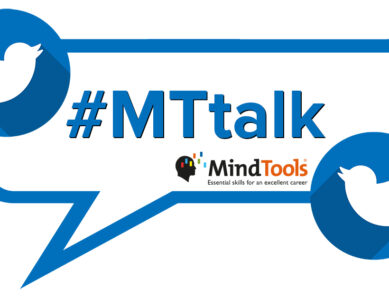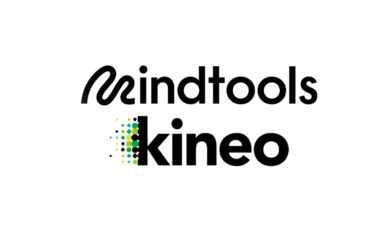Four Steps to Connection
It really irritates me if I sit in a class or lecture and the facilitator only knows two people’s names. It feels as if they talk to those two people only, and the rest of us are like extras on a movie set.
After lecturing and facilitating for a few years myself, it became increasingly important to me to make everybody in a class feel that I connected with them, and so I started using a four-step approach.
Step 1: Learn People’s Names
I challenge myself to learn the names of everybody in a group before our first tea break. When I start with a new group, I make sure that I greet them all personally before our first session begins. That’s my first step to building a relationship with them, and also the first time I can connect their names and faces.
The ice breaker that I normally use gives everybody a chance to speak, and it helps me to form associations. The associations help me to remember people’s names.
Before the first tea break, I ask everybody to turn over or cover their name tags. Then, I go through the class and say each person’s name (and usually remember all of them). If I forget a name when I have to say it, I mostly remember it before I’m done with the whole group. I’ll then go back to that person immediately and say their name.
I’ve found that people deeply appreciate it when someone at least makes the effort to learn their names, because isn’t knowing somebody’s name often where connection begins?
Step 2: Create A Safe Space
I work in a country where 90 percent of the people who use English as a business language have a different first language. It presents us with unique challenges in a lecture hall. People are often shy to talk for fear of making a mistake, or because they feel they don’t know enough “big words.”
Early in the training I declare my lecture hall a safe space. I specifically tell delegates that it’s OK to ask a question or participate in a discussion in less-than-perfect English. I also give them my assurance that nobody ridicules another person in my lecture hall for any reason.
It’s one of our basic needs as human beings to feel safe in all circumstances. And, when we feel safe, we want to connect with the person who created the safe space.
Step 3: Give Equal Recognition
Third, I don’t make a fuss of great comments or answers and I don’t shoot down those that aren’t so great. I realize that many people don’t enjoy it if their comment gets a lukewarm reaction and someone else’s comments receive huge praise.
It’s important to me to thank people for their effort to participate, so I respond with “thank you for sharing that” or something similar. I will then either ask a follow-up question or connect their comment to information covered in class.
Step 4: Be Relatable
“Relatability” creates connection. It means that as a lecturer, I have to be willing to make myself vulnerable. My position in the room implies that I have knowledge and experience, so to me it’s important that I share stories of my challenges, learning curves, and failures.
My appearance can also either help or hinder forming a connection, so I’m mindful of what I wear. I’m careful not to dress in a way that would make me seem alien to a group.
Connection Brings Responsibility
Many of my students and delegates have kept in contact with me for many years. I often receive emails that start with, “Because I trust you, I’d like to ask you about…”.
Always know that connection comes with responsibility. Honor your word. Keep the trust relationship intact. And live respectfully toward all.
Connecting at Work
During our #MTtalk Twitter chat last week we spoke about “Connecting at Work.”
Here are all of the questions that we asked during the chat, and some of the responses.
Q1. What do we mean by “connecting”?
@MicheleDD_MT Building rapport, being genuinely interested in a person & what they have to say.
@ComfortWriter “Connecting” is reaching out and having the other side reach back.
Q2. What’s the difference between communicating and connecting?
@Midgie_MT Communicating is simply conveying a message. Connecting is also understanding that message.
@manavlalotra Simply put – you can communicate without connecting but not vice versa.
Q3. What happens when you are NOT connecting well with others?
@BernieMixon You become invisible in all the ways that matter.
@Yolande_MT Your screen is on but you’re offline. You’re there, but disconnected. Building walls instead of bridges.
Q4. Is it easier for some roles/levels/types of people to connect than others? Who and why?
@ChayneDaisy Whoever we are and whatever role we do, if you have a will, want or need to connect you’ll find a way – we’re all people.
@ZalkaB It depends on the personality and your role. But I think it depends on the effort you put into establishing connections & reach out.
Q5. How has social media affected connecting at work?
Some people feel that social media is a necessary evil, while others feel that it plays an important role in keeping people connected.
@FranklySandeep Social media is helping some functions but relationships can only be developed by good old fashioned networking.
@PG_pmp Social Media has played a huge role connecting people globally, sharing their experiences to bring in more value and for a greater cause.
@maat333 It’s a tool, therefore its nature is good (faster communication), but can also be bad (distorts and atrophies messages and skills).
Q6. What are the risks of seeking to connect?
@WonderPix Making connection does bring risks – of rejection, loss, trust, etc. It’s worth it though.
@harrisonia Connection risk: unmatched sharing (meaning you’re offering more than I’m interested in learning or knowing right now).
Q7. How do you deal with the darker side of connecting?
@wordsallowed Ah the thieves and trolls. Integrity rules. No one can steal your expertise and skills.
@rinkutalk Connecting without authenticity is short-term and meaningless. You lose trust and faith.
Q8. Where have you connected most effectively or easily, and why/how do you think that happened?
@GilchristGeorge Face to face with people, spending time building trust and walking the talk.
@BrainBlenderTec I pretty much connect with most as I don’t make any assumptions and give benefit of doubt. I don’t really talk on the surface but go deeper.
Q9. What might you do to connect with someone at work who you do not get along with/don’t trust, yet still have to interact with?
@TheCraigKaye Talk to them, differences are cool for creating new ideas and ways of working! Aim for a feeling of ease with your communications.
@JKatzaman Keep work connections on a professional level, whether you get along with a person or not. Doing your job well will reflect well.
Q10. How might you help team members connect better with each other?
@Jikster2009 Act as a conduit and create opportunities for them to connect; demonstrate the benefits and role model the ideal behaviours.
@TwinkleTutoring Be the bridge! Find the common ground and highlight to each party. Or play role of facilitator between them and build understanding.
Next time, on #MTtalk…
How big a role does the way we dress play in creating connection with others? And how do you feel about workplace dress codes? Let us know by casting your vote in our poll over here.
In our next #MTtalk on Friday, October 13, our topic is “Dress Codes at Work: Fashion and Fitting In.” To share your thoughts and ideas, please join us at 1pm EDT/5pm GMT/10:30pm IST.
To participate in our chat about workplace dress codes, type #MTtalk in the Twitter search function. Then, click on “All Tweets” and you’ll be able to follow the live chat feed. To join the conversation, simply include #MTtalk in your tweet and it will show up in the chat feed.
Resources
In the meantime, here are some resources that will help you learn more about connecting at work:
Working With People You Don’t Like
How to Have Clever Conversations
How to Make “High Quality Connections”
Building Great Work Relationships
The Power of Trust: a Steel Cable




